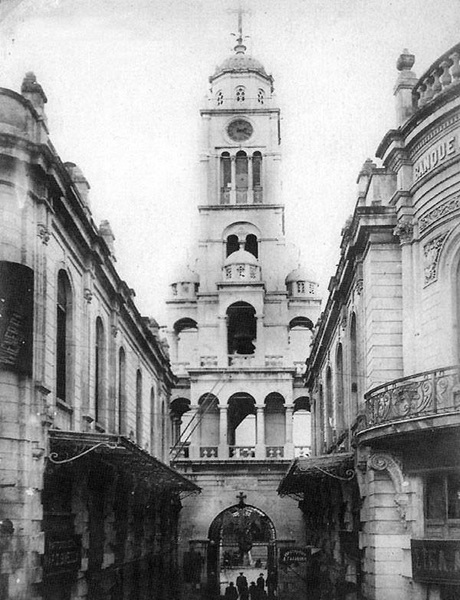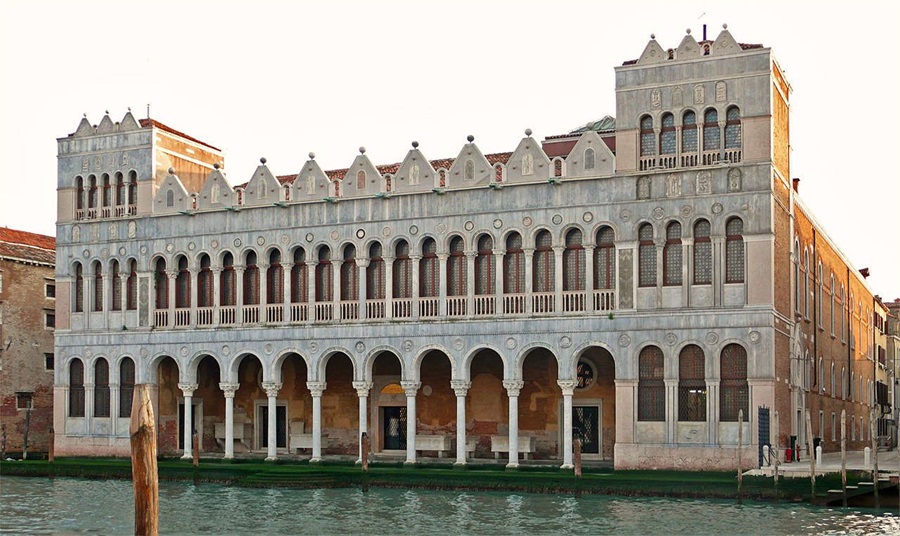
The Interviewees

Interview with Didem İşler - August 2024
1- Were you surprised when you found in the Venice archives evidence that the Greek Orthodox church of Agia Fotini of Smyrna was economically and politically supported by Venice during at least 24 years? Why in these architectural drawings the name of the church was given as Santissima Concezione?
Of course, this was very surprising and exciting information. As stated in the documents, the Italian equivalent of “Agia Fotini” is actually Santa Lucia. However, Venice did not choose to name the church Santa Lucia. There is no explanation in the records as to why the Republic of Venice named the church Santisima Concezione. However, it is understood that the Republic of Venice, which financially supported the church and thus the Greek Orthodox community, wanted to retain all authority over this church, including the right to name it.
2- The 2 amateur done architectural drawings of this church date from 1600 and 1624. What differences do you see in these plans and did the 1624 plan point to building being extended, hence its need?
In the 1600 drawing, the structure has a rectangular plan, it looks like an extremely simple and small chapel. The connection with the street is provided by a narthex with a rectangular plan attached to the southeast corner of the structure.
In the 1624 plan, we see that the structure was expanded 4-5 times horizontally, equipped with additional volumes for different functions such as kitchen, storage, rooms, and was raised vertically with a second floor. Furthermore, in the documents that accompany these drawings in the State Archives of Venice, there are official records that explain the dates, how much money was spent and how all these transformations performed in the church were carried out.
3- The first plan shows that the initial church was simple and relatively small. Can we speculate that this was the first Orthodox church in the city? Do the archives mention any other church of that confession during that period?
The group of documents that I have examined in my study only explains the structural interventions in the church of Agia Fotini in Izmir. In this study, in which I propose to make a small but significant contribution to the history of architecture by bringing to light this group of documents, which have not been published until now, I certainly do not pretend to present an architectural chronology through the sects, and it is not possible to do so. If I still have to answer your question, there is no other church mentioned in the group of documents that I have examined, but when considering the history of the Orthodox sect and the history of the Greek diaspora in Izmir, I believe that the possibility that the church of Agia Fotini in Izmir is the first is rather low. But of course, this topic is the subject of a completely different and complete study.
4- In 1624 an agreement was signed between the Greek metropolitan of Smyrna at the time Makarios and the Venetian consul of the city George Richard Giustiani according to which the Venetians acquired the land on which the structure of the church stood, yet paid the ‘rent’ and expenses for the church, which seems bizarre. So was this a way for the Venetians to bestow Capitulation protection for the Orthodox community and the ‘Italian’ name given part of that cover? Do we know when this arrangement ended? Can we speculate that there were trade advantages for the Venetians to forge close links with the Orthodox community and their diaspora, so it was not an altruistic move on their part?
As I stated in my work, I have not personally found a document that explains when this agreement ended and when the Church took the name of Agia Fotini again and arrived at 1922. I hope that we will be able to access this information with the contributions of researchers working in the Greek archives.
Since religion cannot be considered separately from politics, there is no doubt that this financial support given by the Republic of Venice to the Greek Orthodox community was done in line with mutual interests.
5- The plan from 1624 shows the building not resembling a church at all more like a large residence with a courtyard and out-buildings, with no apse or bell-tower. But clearly this functioned as a church and the local Ottoman authorities must have known this despite the ban on new church buildings that was only lifted in 1839 with the Tanzimat reforms. Do you think the Venetian factor would have been key to allowing this new reality as they were clearly too important in trade for the Ottomans to create a rupture with?
It is certain that the ban imposed by the Ottoman Empire on the construction of new churches and synagogues was intended to ensure that the silhouette of the city of the Empire reflected the religion of the sovereign state. By doing so, existing churches were allowed to continue their existence in the past. However, legal regulations were introduced regarding the restoration of existing churches to be carried out with the knowledge and permission of the state. At this point, it is possible to accept that all physical interventions carried out in the church of Agia Fotini in Smyrna between 1600 and 1624 were carried out with the knowledge and approval of the Ottoman state. As you said, it is also possible to determine this by examining the plan dated 1624. At that time, the church, which had the silhouette of a house from the outside, did not have an apse or a bell tower. However, the plan of the church, which we see on the insurance maps of Smyrna prepared by Charles Edward Goad in 1905, has the appearance of a complete church with its apse, apsidals, bell tower and courtyard. It is therefore clear that the structure took on this appearance only after the Tanzimat reforms, when the prohibitions in question were revoked.
6- Have you been able to access any Greek Orthodox archives that could shed a light on this ‘dual’ identity arrangement of this church before the Tanzimat period? Do we know if this was the only functioning Orthodox church in Smyrna pre-1839?
Unfortunately, I have not yet worked in the Greek archives. However, I hope that this study will lead to future collaborations with my architectural historian colleagues working in the Greek archives.
7- You claim that the abbreviation “oct.” in the documents for the rent to be paid to the Church “oct. 22: cera et oct. 22: olio” could be the Spanish silver coin “Real de ocho” (in Italian “pezzi da otto”). Can you explain on what basis you came to this conclusion?
According to the information provided by economic historians, we know that the Spanish silver coin “Real de ocho” became the dominant currency in the market, especially after 1537, when it was printed in large numbers. In addition, in Francesco Balducci Pegolotti’s famous work “La pratica della Mercatura”, the abbreviation “oct.” is seen as the same currency. It is logical that the wax and oil paid to the church as rent were determined by measuring them with a monetary value. Although this abbreviation is similar to the Ottoman weight unit “okka”, it is also possible to say that the sound “t” in the abbreviation “oct." does not phonetically correspond to okka. In addition to all this evidence, we see that the abbreviation “oct." is also used in documents to describe the salaries paid to individuals. The fact that the total expenses incurred for the church are written in the documents as “Real” currency also shows that the calculations were made on the basis of the Spanish silver coin “real de ocho” (in Italian “pezzi da otto” and in Latin “octo”), which was the dominant currency on the market at the time. However, since this is the field of expertise of economic historians, I would like to emphasize that this view of mine is a hypothesis of probability.
8- You are currently working as part of your PhD research under the title ‘Venetian-Ottoman architectural interactions’. Your main source for this is the State archives of Venice. How rich are these in terms of descriptions, illustrations and how far back does this interaction go. Was it a two-way traffic of ideas and were the resident foreigners of these states in both lands play a crucial role in that exchange?
The State Archive of Venice have an incredible wealth of documents that provide resources for research on the history of architecture. This can be said not only in terms of Venetian-Ottoman architectural interaction, but also in terms of documents that shed light on the architectural history of the entire Mediterranean geography and Europe during the 1100 years of existence of the Republic of Venice (697-1797).
In my personal research, I can say that the visual archive related to Ottoman geography is extremely rich in terms of documents from the 18th century.
The Republic of Venice and the Ottoman Empire were the two superpowers of the period that lived their golden ages despite and thanks to each other. Their economic relations did not break even during periods of war and were the most important factor that kept the two societies together. In this context, both societies had settled minorities of all ethnic identities and religions, or had long-term relations for commercial and political reasons. Therefore, in my field of study, the history of art and architecture, the most important sources are archival documents that document these multicultural and multilingual living practices between these two societies.
Interview conducted by Craig Encer

Agia Fotini church of Smyrna viewed around 1920 before its destruction in 1922.

